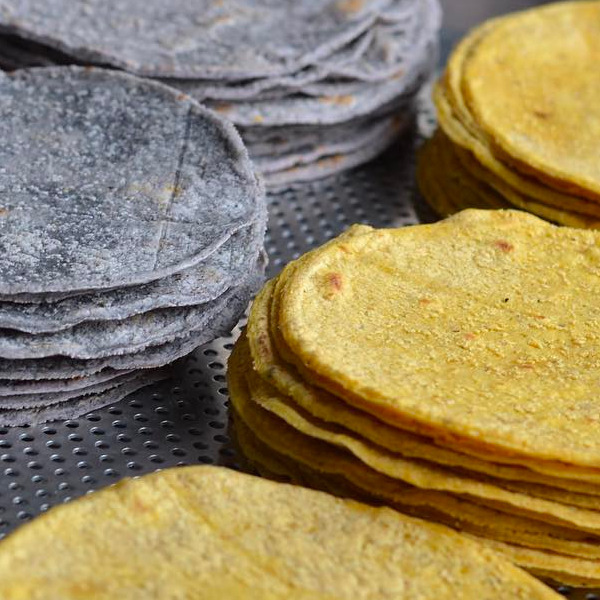Around the corner from the Ohio Department of Taxation’s offices on the north side of Columbus, in the shell of an old fast food restaurant, sits a charcoal-fired, eight-spit, 450-degree Hermanos Ruiz oven, imported from Peru.
Peruvian native Alberto Denegri’s father-in-law used it briefly at a restaurant on High Street a decade ago, but for years after that restaurant closed, it sat unused in Denegri’s garage.
After Denegri bonded with his Somali-born friends Farxaan Jeyte and Fartun Aliduux over their respective cuisines, the trio fired up the oven and made vague plans to open a restaurant with it. Just a few weeks later, Jeyte and Aliduux called Denegri, ready to sign a lease. They opened The Mix Charcoal Chicken in late 2019. Today, they’re using the oven for both pollo a la brasa and grilled goat.
The restaurant’s whole menu is an unlikely mashup of Somali and Peruvian foods. It’s a place where the chicken is halal and the camel meat comes stewed. Where yuca fries and ocopa sauce appear on the same menu as sambusas and bariis iskukaris. The friends have found overlaps in their cuisines where others never thought to look—in the use of paprika, pastas, and camelids, and in traditional dishes that are strikingly similar to each other, like lomo saltado and suqaar, or picarones and kac kac. Plenty of customers aren’t familiar with either tradition. They come from all over Columbus, drawn by word-of-mouth buzz and a good review from the Dispatch last June.
The restaurant’s whole menu is an unlikely mashup of Somali and Peruvian foods. It’s a place where the chicken is halal and the camel meat comes stewed. Where yuca fries and ocopa sauce appear on the same menu as sambusas and bariis iskukaris.
I began my food writing career in Columbus in 2001, with a food column at The Lantern, the student newspaper at The Ohio State University. After that, I spent several years contributing to the food section of the Columbus Dispatch. We had high hopes for the city’s dining scene then. I heard it often. Columbus was fast-growing. We had just gotten our first professional sports team. We could have the most interesting scene between New York and Chicago.
We had been known for so long as a test market, the headquarters of corporate chains such as Wendy’s, White Castle, Sbarro, and Bob Evans. We were hungry for something more dynamic, more fitting for a city of our size. A few bright spots aside, we never quite got it. The suburbs were especially bleak. Italian restaurants and gastropubs dominated, and attempts at global fare tasted watered-down, from Mexican mall franchises to Chinese food from corporate restaurant group Cameron Mitchell.
Many of our options then felt soulless and concept-driven, created in focus groups. Even though immigrant cooks were the backbone of many local restaurants, their food, served the way they thought it should be prepared, was hard to find.
Things have changed in the past twenty years. In the early ’90s, Columbus surpassed Cincinnati and Cleveland in population, becoming the largest city in Ohio. The heartland boomtown needed more people, so city officials did what they could to encourage immigration. They funded initiatives to provide interpretation services for new residents and to facilitate entrepreneurship. Drawn by the low cost of living, immigrants began to resettle from larger cities on the coasts. Family and friends gradually followed. Over time, waves of immigrants from south Asia, east Africa, and Latin America quietly opened restaurants, grocery stores, and bakeries in faded strip malls and abandoned fast food restaurants, far from the trendy, high-rent city center and luxury shopping districts, breathing new life into sleepy parts of Columbus.
Reynoldsburg, the east side suburb where I grew up, where fast food chains once outnumbered independent restaurants at least fifteen-to-one, has become a hotbed of Nepali-Bhutanese food. There’s
Sargam Restaurant & Bar,
Durbar, and
Yak N Yeti just over in Blacklick. At that last restaurant, you can order
momos and
thali platters as well as dishes that are less common stateside, including
sukuti, which is a traditional type of spiced and dried meat,
and
sekuwa, which is marinated goat or lamb flash-roasted in a tandoori oven. There’s more. Within a few blocks of a long-departed Kmart, you’ll find
pupusas from
El Burrito Loco, Pakistani
biryani from
Shanza’s Biryani House, and spongy Ethopian sourdough flatbreads from Zahra’s Injera.
Latin American food in Columbus used to be defined by places like Chi Chi’s and Cantina del Rio, a Mexican chain that Bob Evans launched here in 1992. Now, you’re never too far from a La Michoacana market. There are nearly a dozen of them spread out around town, and many have bakeries, restaurants, butchers, and travel desks where you can buy a cheap plane ticket to Guadalajara or Guayaquil. For al pastor tacos, there’s El Fogoncito out on SR-256. For Pueblan cemitas and memelas, go to Do2 Sabores off SR-161. For Oaxacan tlayudas, try La Super Torta on Georgesville Road. Keep an eye out for the hundreds of food trucks around town, offering regional Mexican foods as well as dishes from Peru, Venezuela, Colombia, Cuba, and beyond.
Columbus has the second-largest Somali community in the U.S. after Minneapolis-St. Paul, and the growth of Somali cuisine has been one of the most important culinary developments of the 2000s. The first Somali restaurants popped up on the city’s north side in 2002—African Paradise and Durbo’s, where many Columbus residents had their first tastes of bajiya and suqaar. Several dozen more have since opened, including Banadir Cuisine, with its canjeero flatbreads, and Afra Grill on Morse Road, a fast-casual spot serving bowls of stewed meats over rice or mulawah, another type of flatbread, prepared by a Somali chef and restaurateur who came from Minneapolis.
These entrepreneurs aren’t catering to the white, middle-class consumer who won’t stray far from steak and potatoes, like their suburban predecessors. Nor are they trying to sell some imagined idea of authenticity. For the most part, they’re just trying to make a living cooking the food that is personal to them. The city is responding to it.
Solay Bistro opened in 2010. In 2014, brothers Abdilahi and Mohamed Hassan took it over and reopened it as Hoyo’s Kitchen. “Hoyo” means “mother,” as in their mother, Hayat Dalmar. The restaurant’s rice bowls and KKs—proteins, such as goat meat, wrapped in sabayad flatbreads—are tributes to family tradition and the talents of chef Halimo Alibair, who stuck around from Solay. Hoyo is thriving by attracting customers from beyond the Somali community, Abdilahi told Columbus Monthly.
In 2019, the restaurant expanded to the city’s busy North Market. It’s a sign of things to come, a move into the mainstream. It’s not what most people would have predicted a couple of decades ago. A city that likes to portray itself as a steel-and-glass commercial hub probably didn’t expect that its pro-growth policies would lead to a mom-and-pop immigrant restaurant boom, but today, Columbus might actually have the most interesting dining scene between New York and Chicago.




